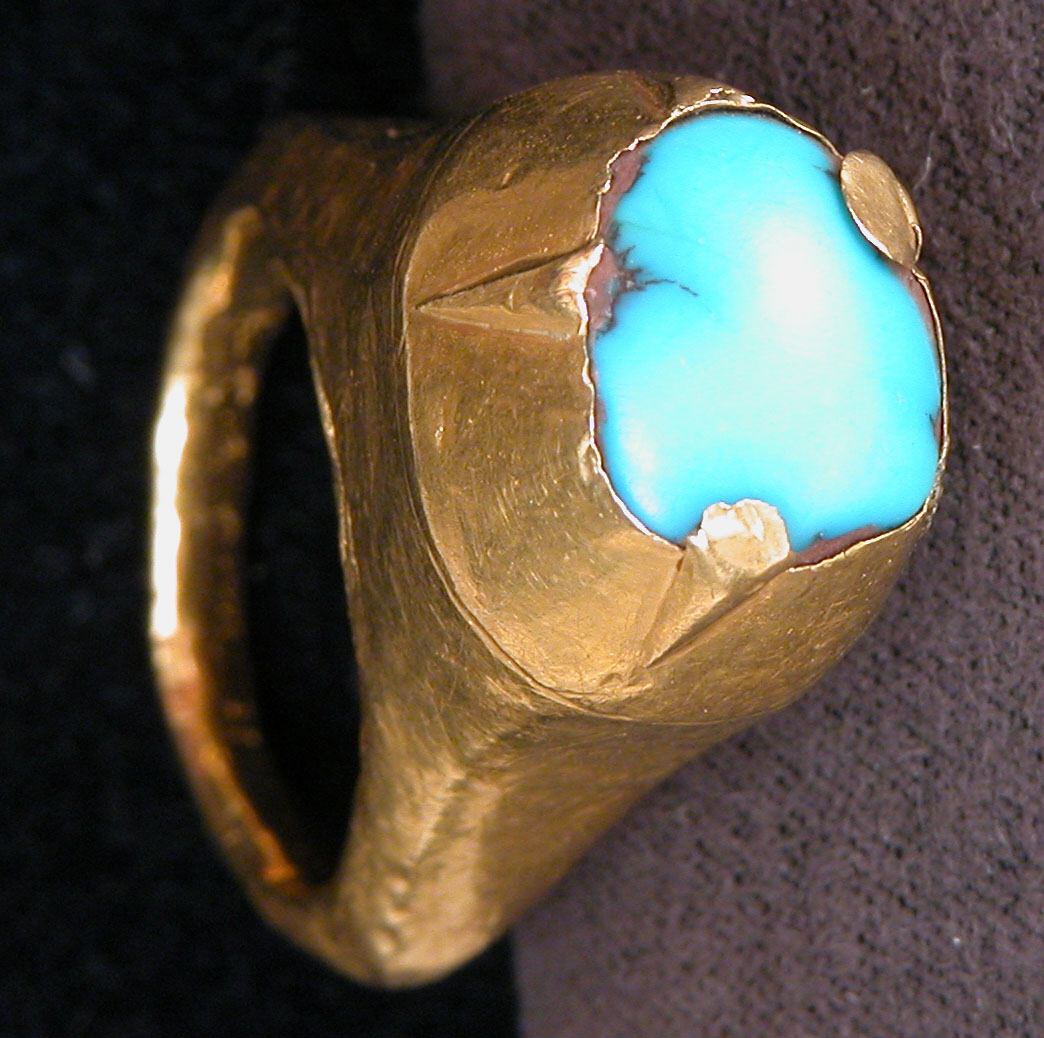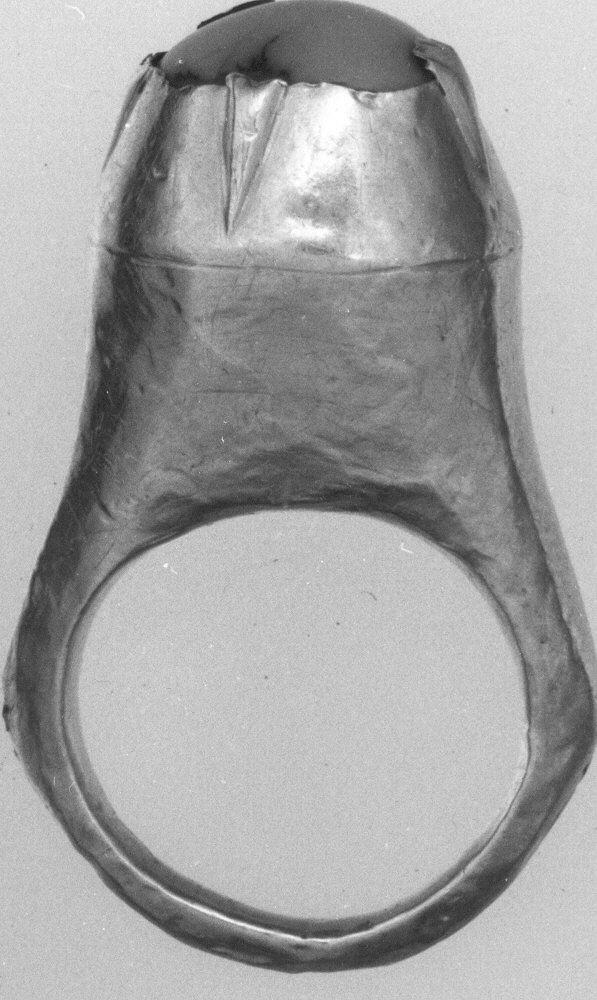Ring
Iranian turquoise, of which deposits were exploited in the mountains near Nishapur in Khorasan, has been known and valued since proto-historic times, and it was widely exported to the West. Precious and semi-precious stones were sometimes believed to have apotropaic properties. The polymath al-Biruni, who wrote a book on precious stones in the early 11th century, explains that turquoise was believed to dispel immediately the effect of the evil eye, i.e. curse, and that for this reason people wore it and necklaces were made for children.
In contemporary Persian poems poets often use the image of precious stones as metaphors of magnificence and to represent colors, whether they are describing flowers, natural settings or architectural monuments. Here, the shape is a development of an older one in use under the Parthians, as in one ring brought to light in the excavations at Masjid-i Sulayman in south-west Iran. Claws, as the small wedge-shaped ones here, are considered an innovation of the 9th-10th centuries.
Due to rights restrictions, this image cannot be enlarged, viewed at full screen, or downloaded.
This artwork is meant to be viewed from right to left. Scroll left to view more.




